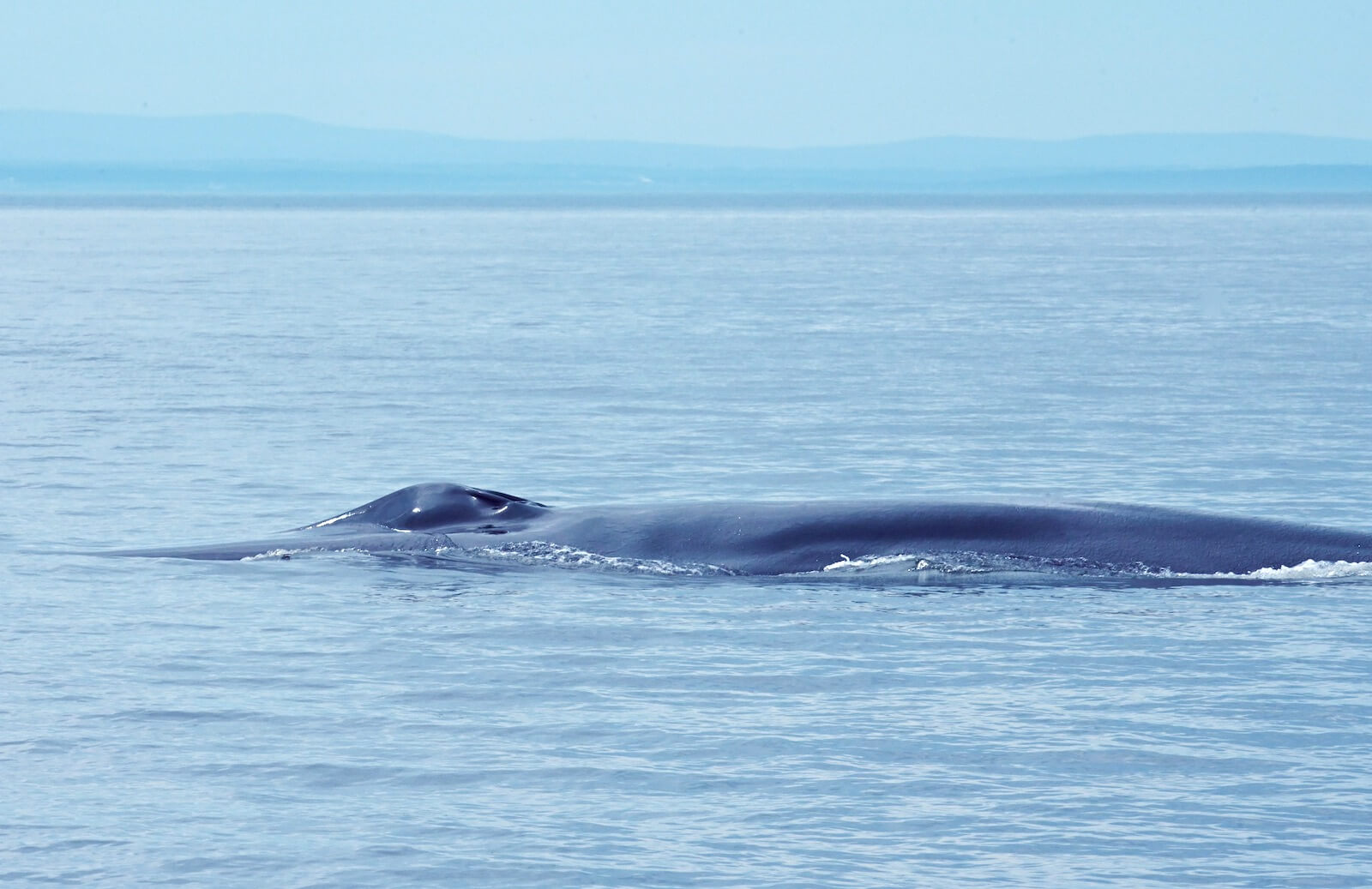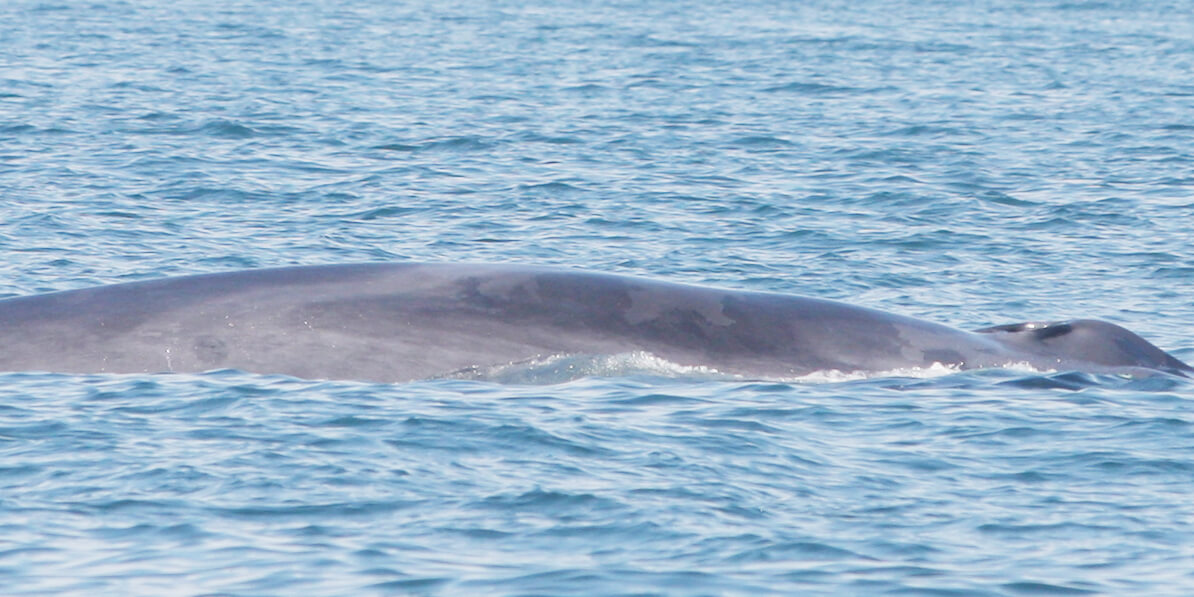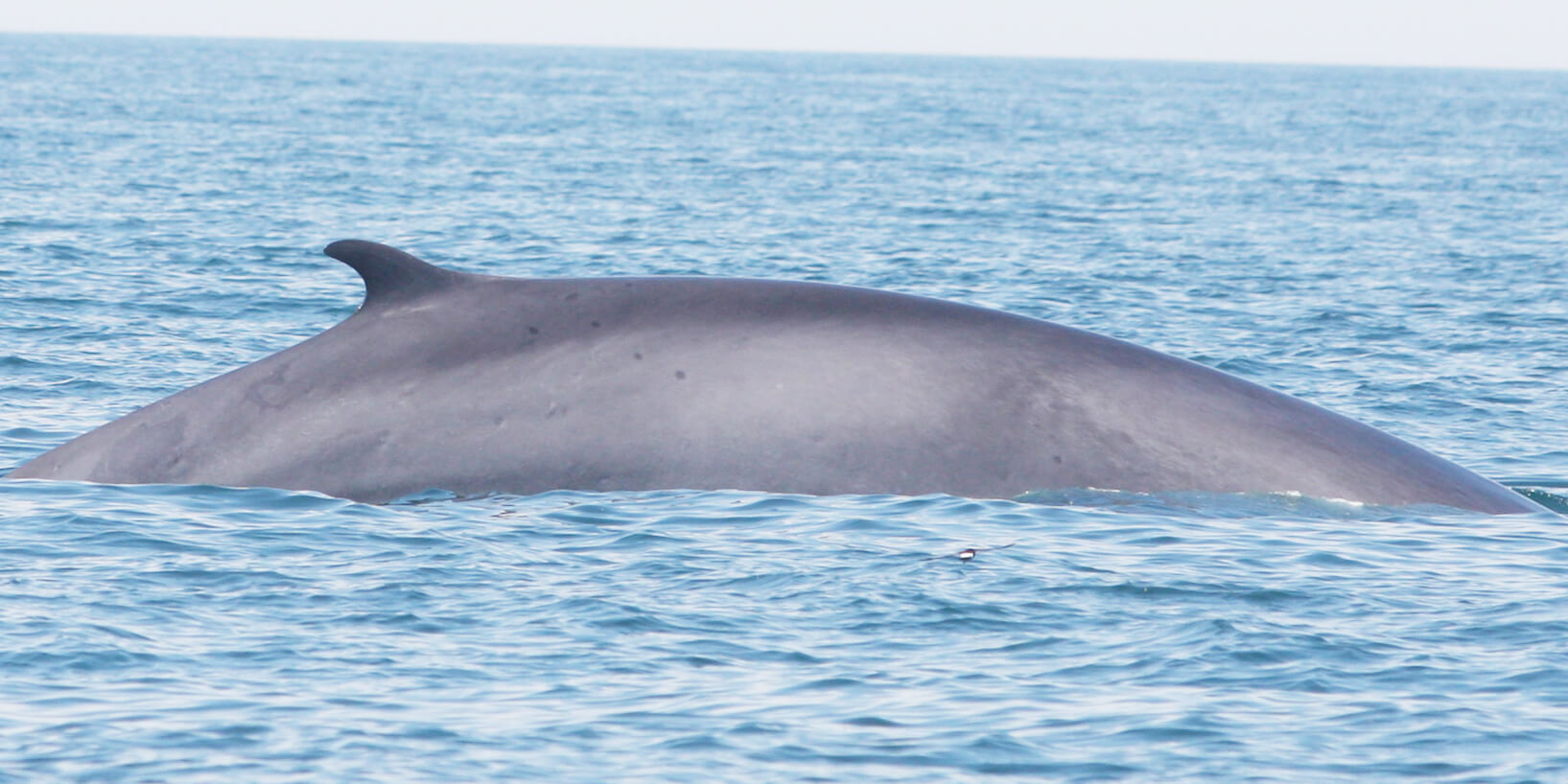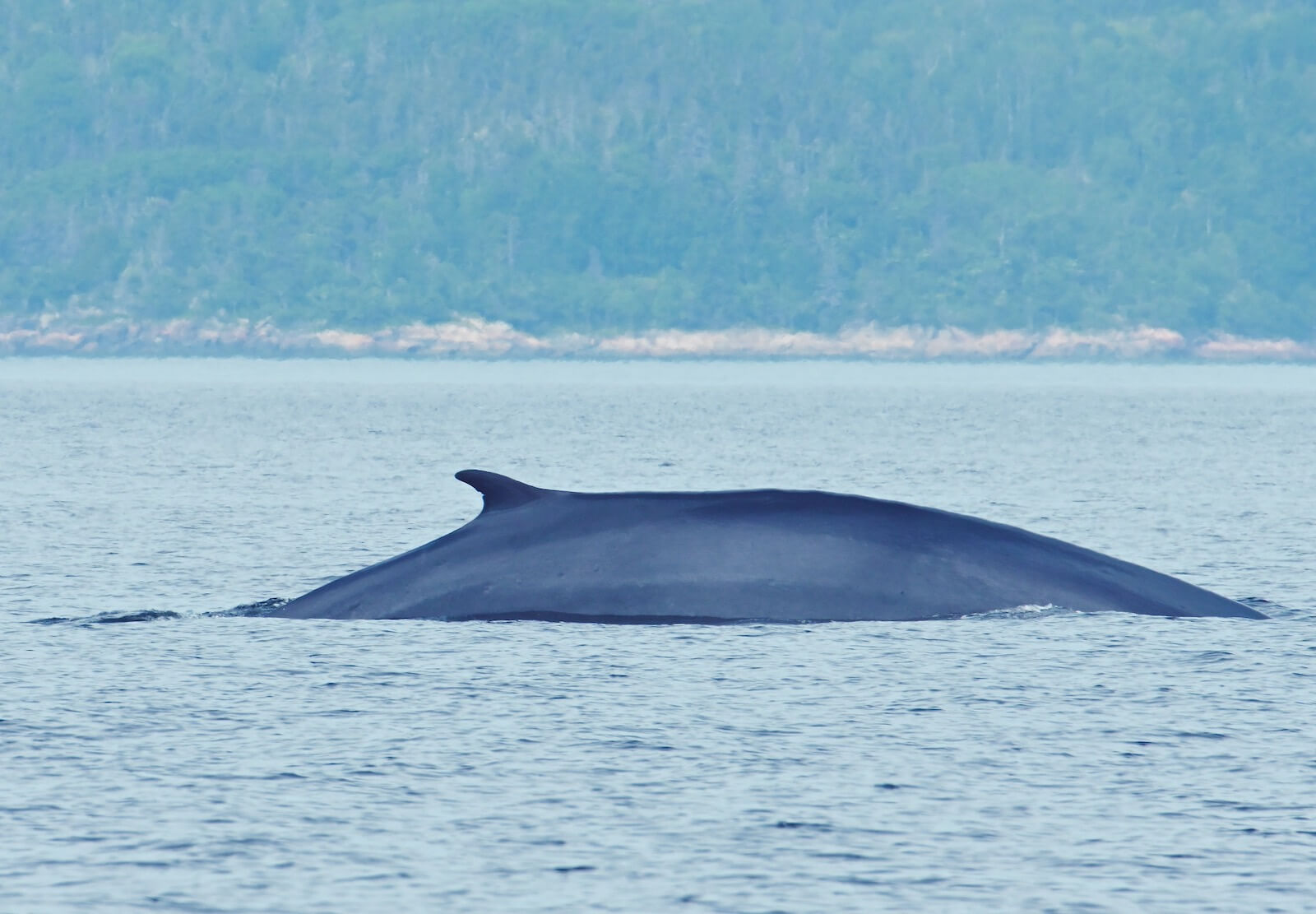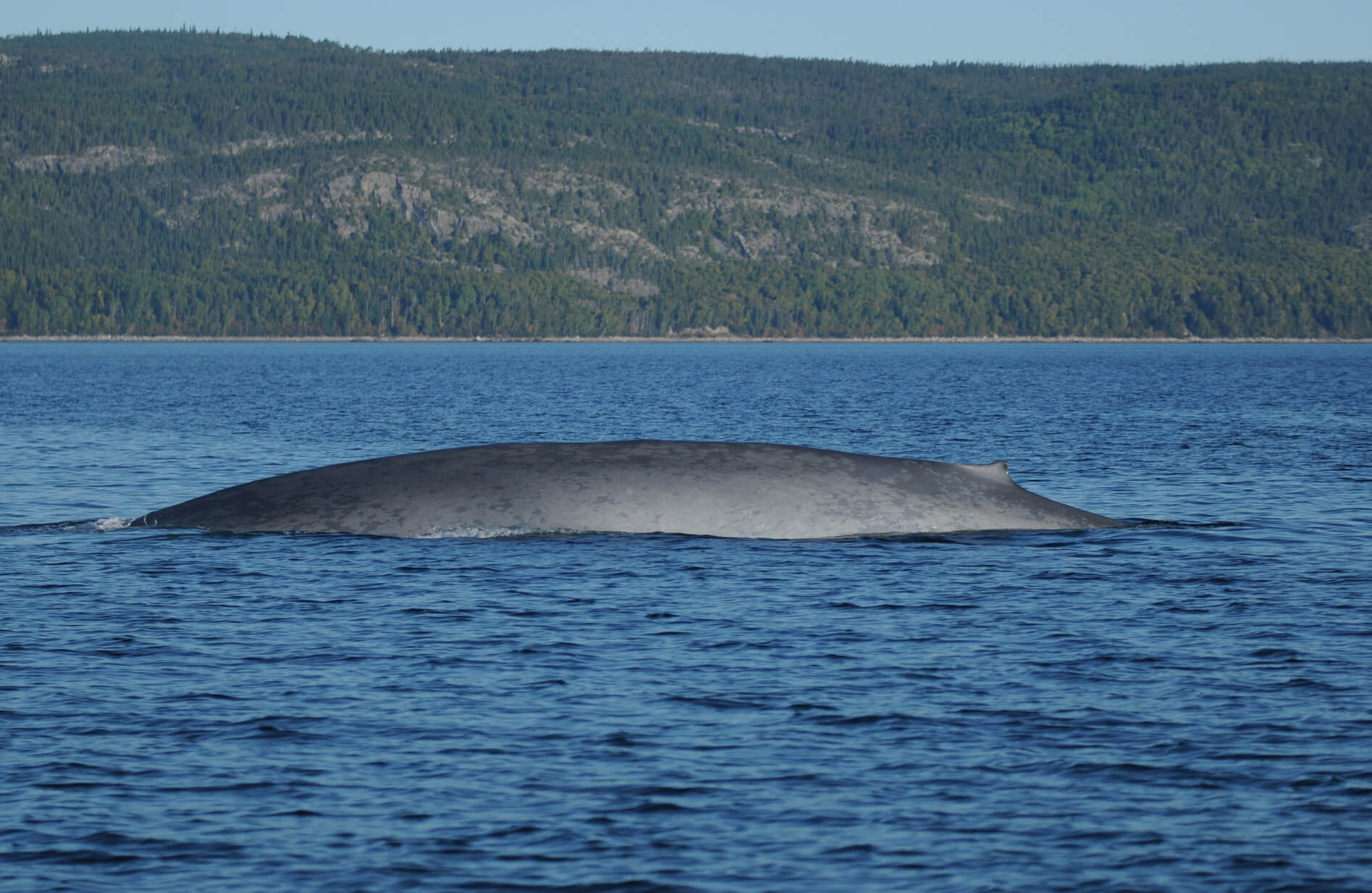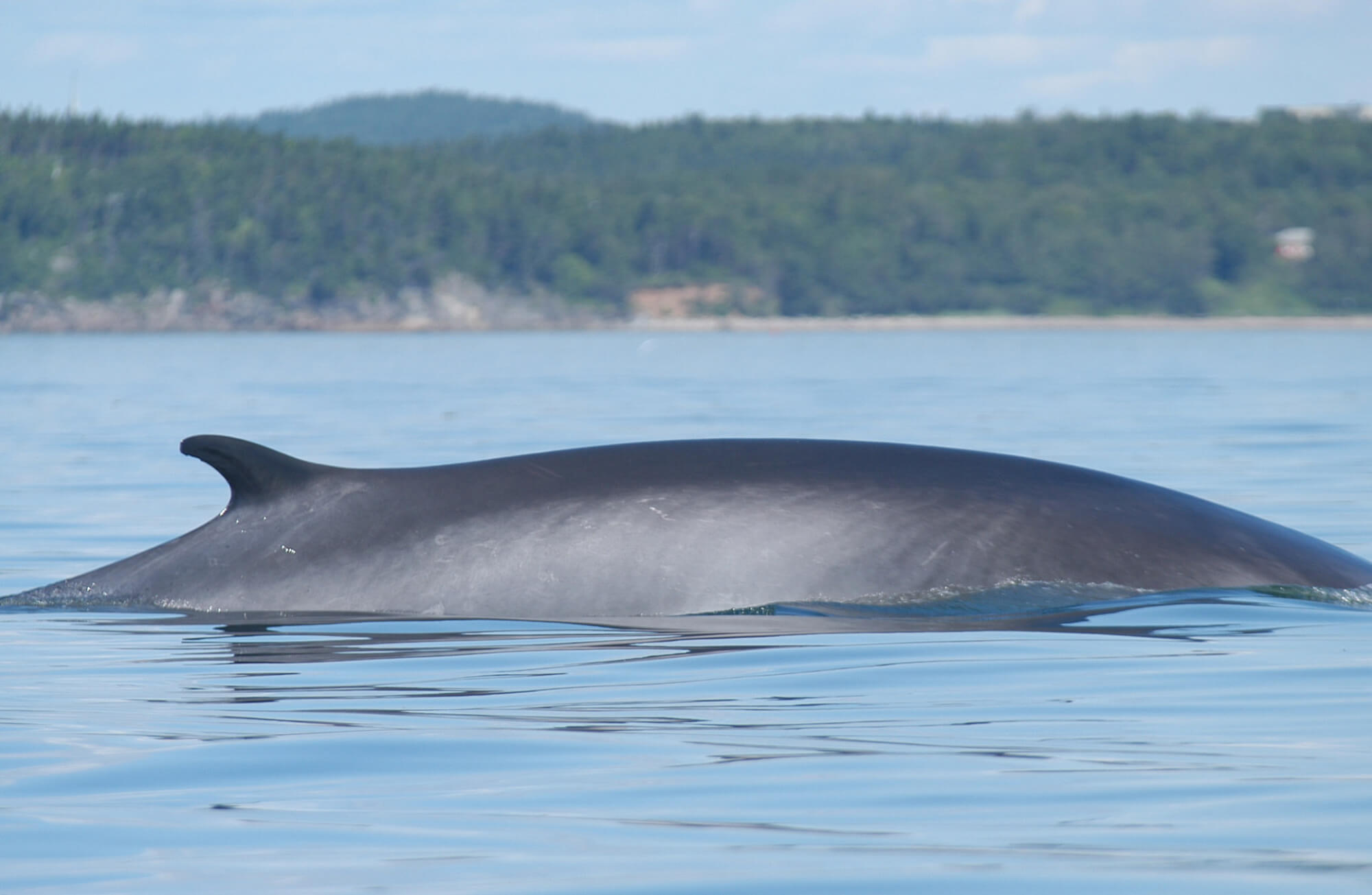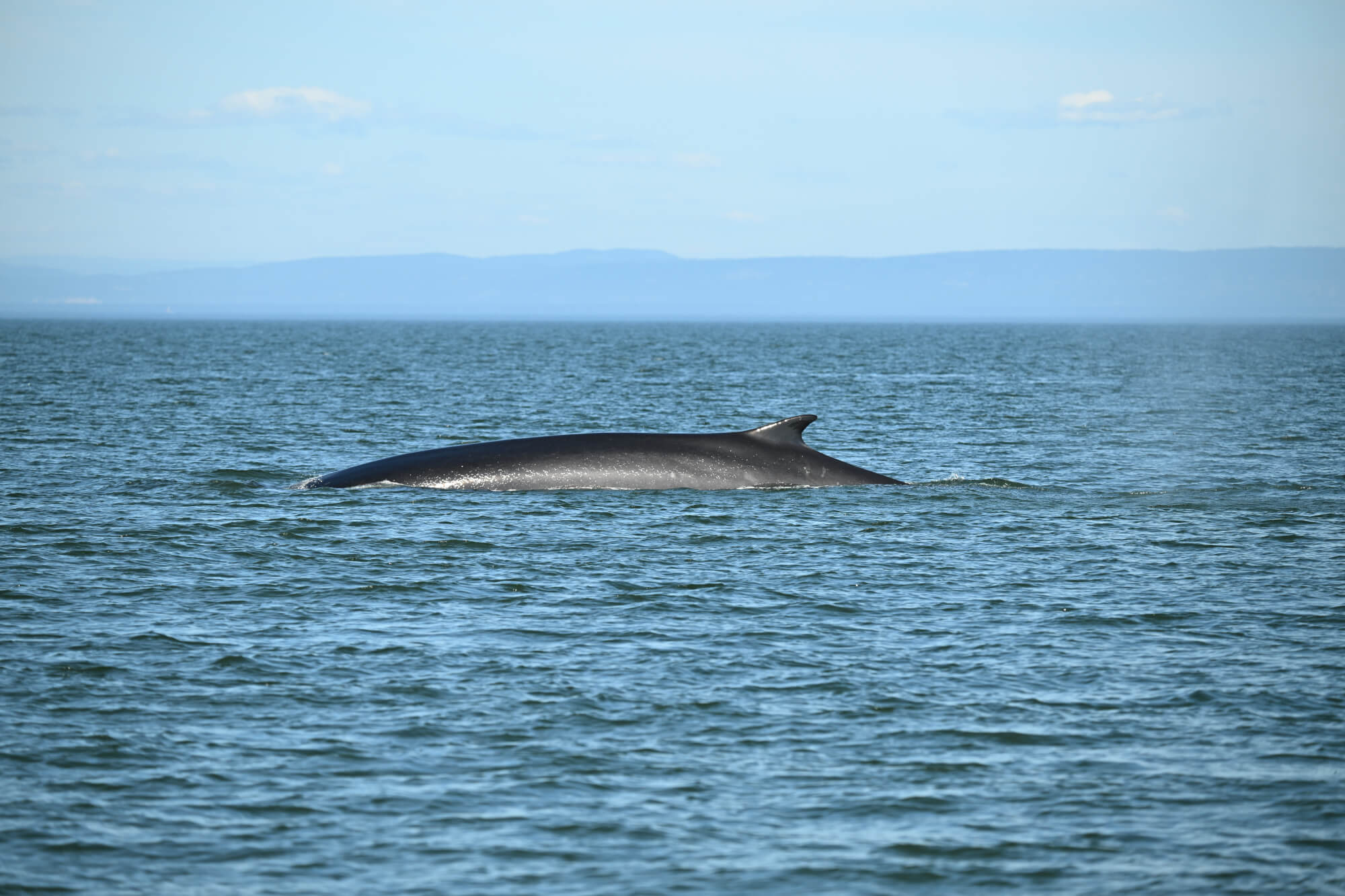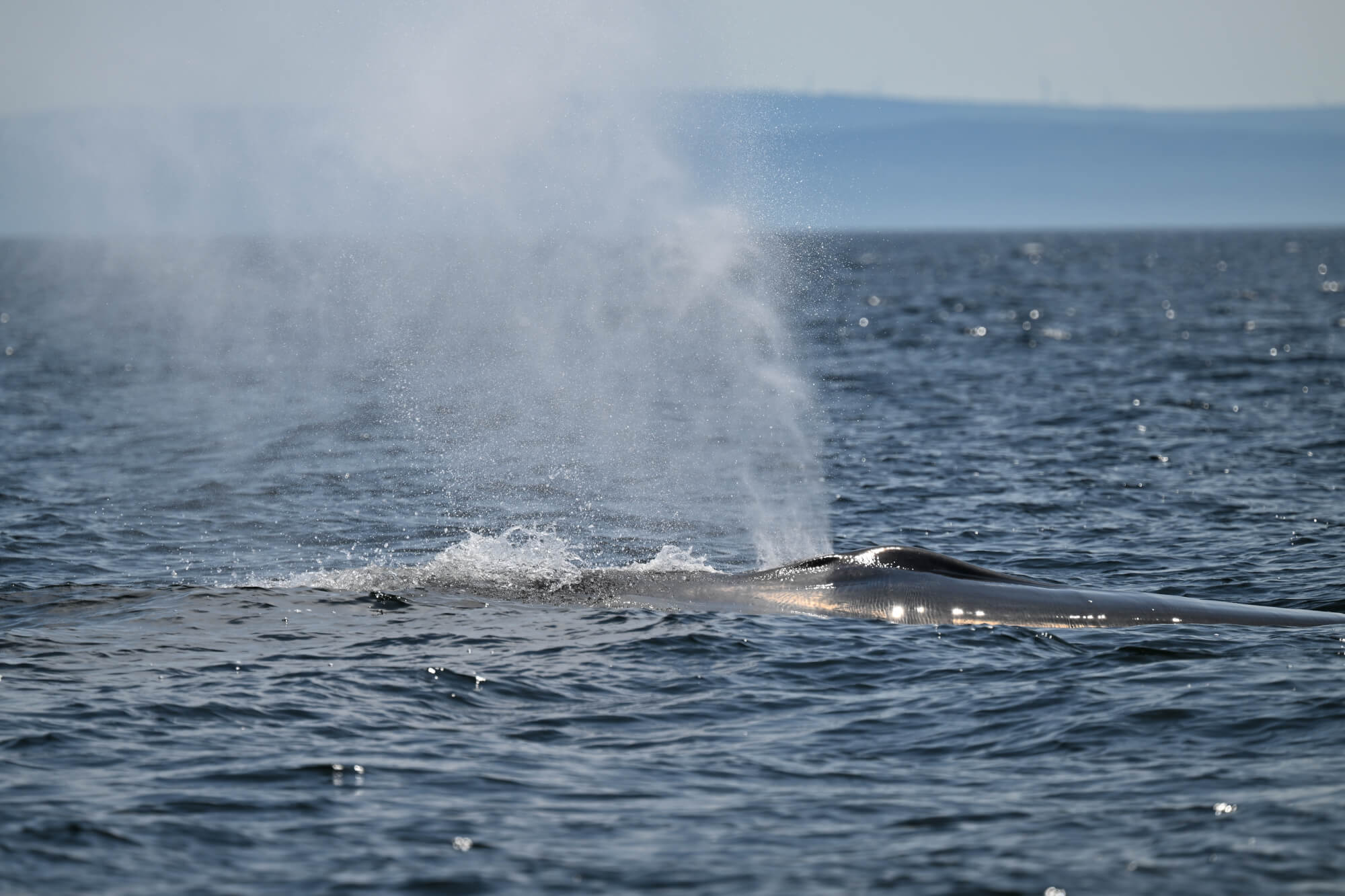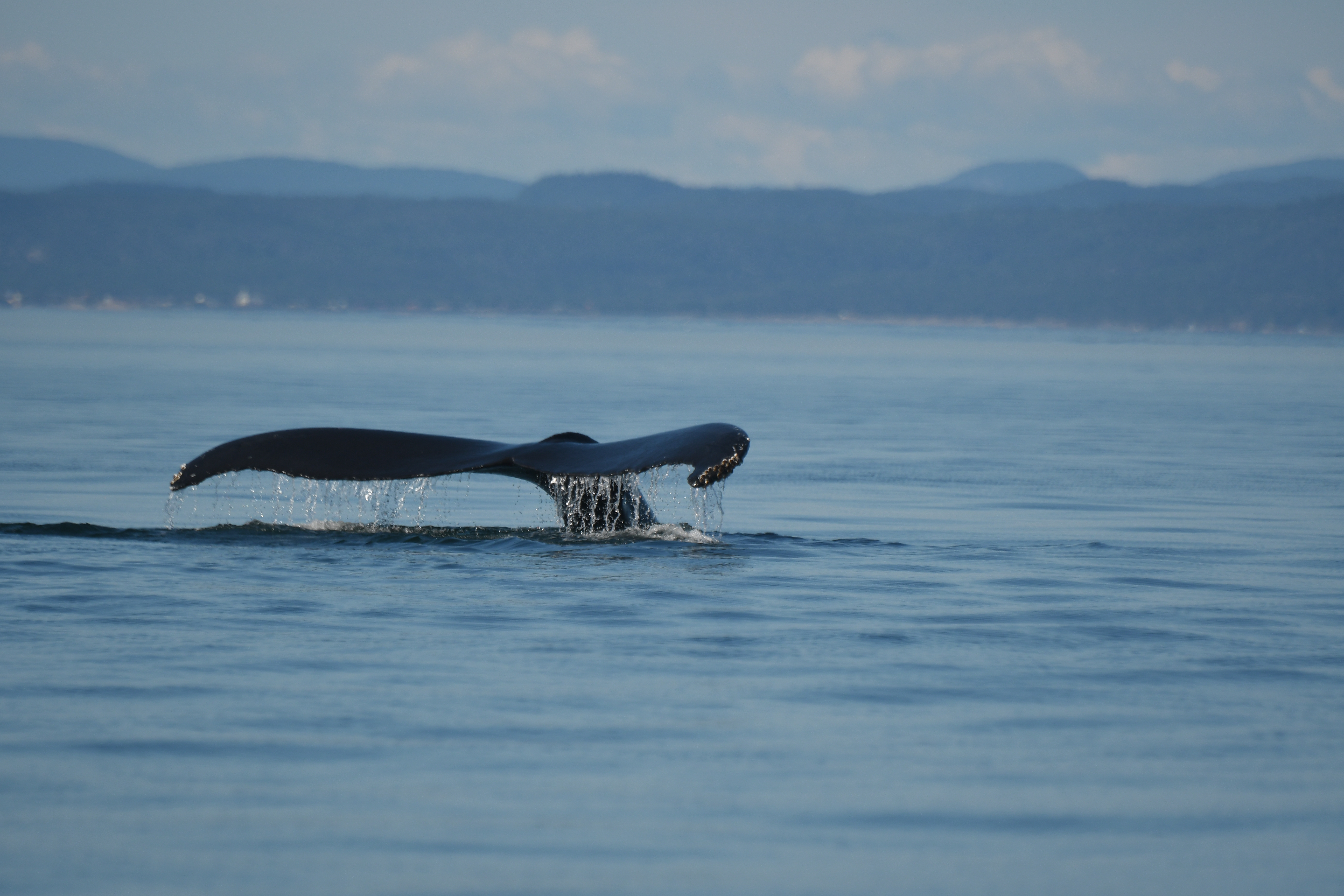After arousing curiosity last summer in the estuary, a deceptively similar fin whale has once again been turning heads. By comparing photos taken in 2012 and 2024, and thanks to a biopsy performed on the individual in 2016, researcher Julien Delarue and the team from the Mingan Island Cetacean Study (MICS) were able to confirm the species. Half-fin, half-blue, a hybrid rorqual is swimming in the St. Lawrence!
Upon seeing photos of the large cetacean (taken by Renaud Pintiaux) published in a Whales Online article on the subject in June 2024, rorqual expert and former MICS employee Julien Delarue recalled an observation during which he had photographed the hybrid. “We first saw this animal in the Mingan region in 2006,” he explains. “At the time, we had already noted its bluish colour and even slightly speckled pigmentation in places, somewhat reminiscent of a blue whale. So we already suspected it could be a blue-fin hybrid.” A biopsy performed by researcher Christian Ramp subsequently confirmed the identification.
A biopsy is the only way to confirm beyond a doubt that a whale is indeed a hybrid. This research technique involves taking a sample of skin or blubber for subsequent analysis. In this case, the biopsy revealed not only that the individual is a hybrid, but also that it is a male. The MICS team nicknamed it “Bleuet” because of its bluish colour when it was first sighted. Julien Delarue confirms that the hybrid’s status “was confirmed [thanks to an] analysis of the biopsy taken in Mingan in 2012 by the lab of Per Palsbøll and Martine Bérubé” (Palsbøll lab, University of Groningen).
In terms of photo-identification, the animal now has a notch on its dorsal fin that will facilitate its identification in the future. Previously, it could only be recognized by the colour pattern of its right flank.
Between June 11 and July 3, 2024, the hybrid spent a few weeks in the estuary. Naturalist and wildlife photographer Renaud Pintiaux was able to take photos of the individual and suggested that it was a hybrid. Despite its general appearance, several features led him to suspect a cross with a blue whale, including its pale colouring, large size, and wider blowholes. Renaud also had the chance to see the animal again this winter in the estuary. All season long, observers pacing the shores wondered about the identity of this large rorqual. Now they have a satisfying answer!
How rare is hybridization?
While the evolution of blue and fin whales diverged 8.35 million years ago, it’s worth wondering why the two species interbreed. A lack of mates and environmental disturbances could be causes of hybridization. This isn’t a new phenomenon, however, as one study has shown that blue whale DNA actually contains 3.5% fin whale genes.
Recent research has also brought to light the conservation issues stemming from this hybridization. The mixed physical characteristics between the two species create a number of identification challenges. The genetic integrity of blue whales, which are endangered, is also threatened by this phenomenon. The fin whale, on the other hand, is a species of “special concern.”
Genetic analyses have confirmed the fertility of some hybrids, including a second-generation case involving a female hybrid and a male fin whale. Will Bleuet be able to reproduce? It’s impossible to say for now, since the fertility of hybrid males has yet to be confirmed.
The presence of a hybrid in the St. Lawrence underscores the importance of monitoring this phenomenon in rorquals to better understand its implications for biodiversity and adapt conservation strategies accordingly.


